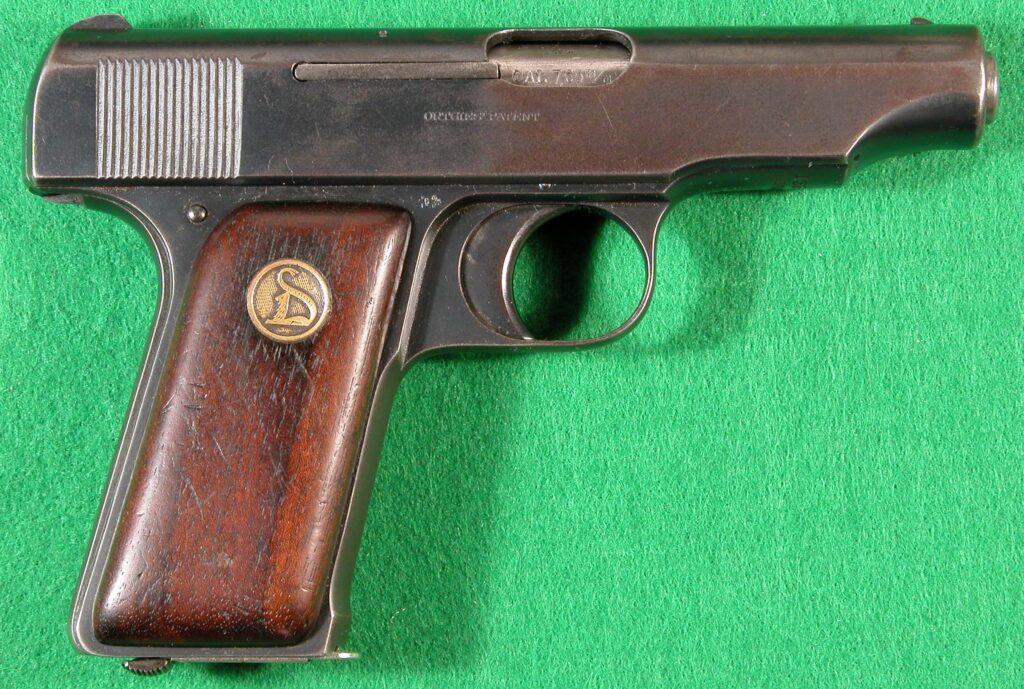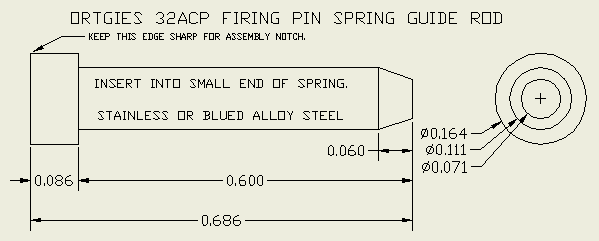The Ortgies is a 1920-1927 production German pocket pistol that was very popular at the time and was imported in large quantities into the US. It is externally similar to the Colt pocket pistol but completely different internally. It is comfortable and pleasant to shoot.

In many ways it is an elegant design. It has no screws. It is nicely finished with no corners to catch on a pocket. As a 100 year old striker fired pistol it should never be carried with a round in the chamber. Here is a very good article about these pistols, and another here.
The main quirk of these pistols concerns the firing pin spring guide rod. Firstly, when you field strip one of these the guide rod launches itself (with or without the spring) out the back of the pistol. Field stripping instructions usually include an admonition to cover the back of the slide with a finger, disassemble in a plastic bag, or just to “take care” to not lose the guide rod. Secondly, assembly is difficult unless you know the “trick”. There is an assembly notch on the underside of the slide above the guide rod channel. To assemble, compress the guide rod and spring and push it up into the notch. Then you can replace the slide normally. This is best practiced a few times without the firing pin spring and guide rod as bobbling the slide installation will also launch the guide rod out the back. There are at least two different Ortgies guide rods. One is 0.842″ long which is too long to fit in the assembly notch of some pistols. Here is one that works in a fifth style 32ACP pistol which is the majority of production.

Note that it is important to insert this into the small end of the spring and insert the large end of the spring into the firing pin housing. Otherwise the pistol will jam.
One other note, do not attempt to remove the grip panels without comprehensive disassembly instructions. There is a latch inside the magazine well which must be pressed in to release the back edge of the grip panels. The front of the panels are hooked into the frame. Great care must be taken as the wood engagement surfaces are very small and comparatively fragile. In general, the grips should not be routinely removed as this is unnecessary for cleaning and only necessary for a detail strip.
Please leave any comments using the post in my comments category.
